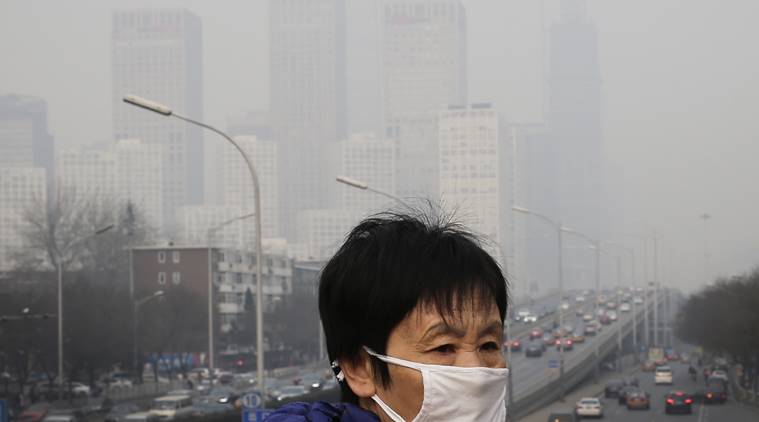Beijing, northern China hit by worst pollution this year
Beijing's municipal air pollution emergency response office on Tuesday issued a yellow alert for smog, reminding residents to take precautions. The yellow alert is the least severe, followed by orange and red.

Air pollution is worsening in the Beijing-Tianjin-Hebei province region and nearby areas and is expected to linger until Friday due to unfavourable meteorological conditions for dispersal, state-run China Daily quoted officials as saying. (AP Photo/File)
Beijing and several cities in northern China on Wednesday were blanketed by the worst smog so far this year with pollution readings shooting up well above hazardous levels.
Readings by the US Embassy’s air quality monitor in Beijing showed PM 2.5, the fine particulate matter that causes smog, hit 376 micrograms per cubic meter which meant ‘hazardous’ levels of air pollution with potential to cause ‘serious health’ problems to everyone. This is the highest reading in Beijing so far this winter.
Beijing’s municipal air pollution emergency response office on Tuesday issued a yellow alert for smog, reminding residents to take precautions. The yellow alert is the least severe, followed by orange and red.
The yellow alert and above will trigger a series of compulsory emergency responses including the suspension of outdoor construction operations to reduce dust, the restriction of heavy pollution vehicles or the suspension of production in smokestack industries.
Air pollution is worsening in the Beijing-Tianjin-Hebei province region and nearby areas and is expected to linger until Friday due to unfavourable meteorological conditions for dispersal, state-run China Daily quoted officials as saying. Twenty-eight cities were affected by heavy pollution.
Chai Fahe, deputy director of the National Joint Research Centre on Air Pollution Causes and Control, said weak winds from the south and high humidity in the region are to blame for the heavy smog.
Northern parts of the country have entered the period of highest emission, as heating services officially begin on Thursday, he said.
Currently, emissions from industries and transportation sources in the region remain high. Kicked-up dust has yet to be well-controlled at various large construction sites,” Chai said, adding that the start of the heating season will further increase emissions.
City officials earlier this year said Beijing which has suffered heavy pollution for several years has begun witnessing more clear and sunny weather due to a host of measures. This included completion of 338 projects to switch from coal-fired heating to that of natural gas-fired one costing about USD 1.3 billion.
As part of a campaign launched in 2013, Beijing has phased out about 99.8 per cent of coal-fired stoves in the city. Natural gas and other forms of clean energy are used to replace coal.





































No hay comentarios:
Publicar un comentario